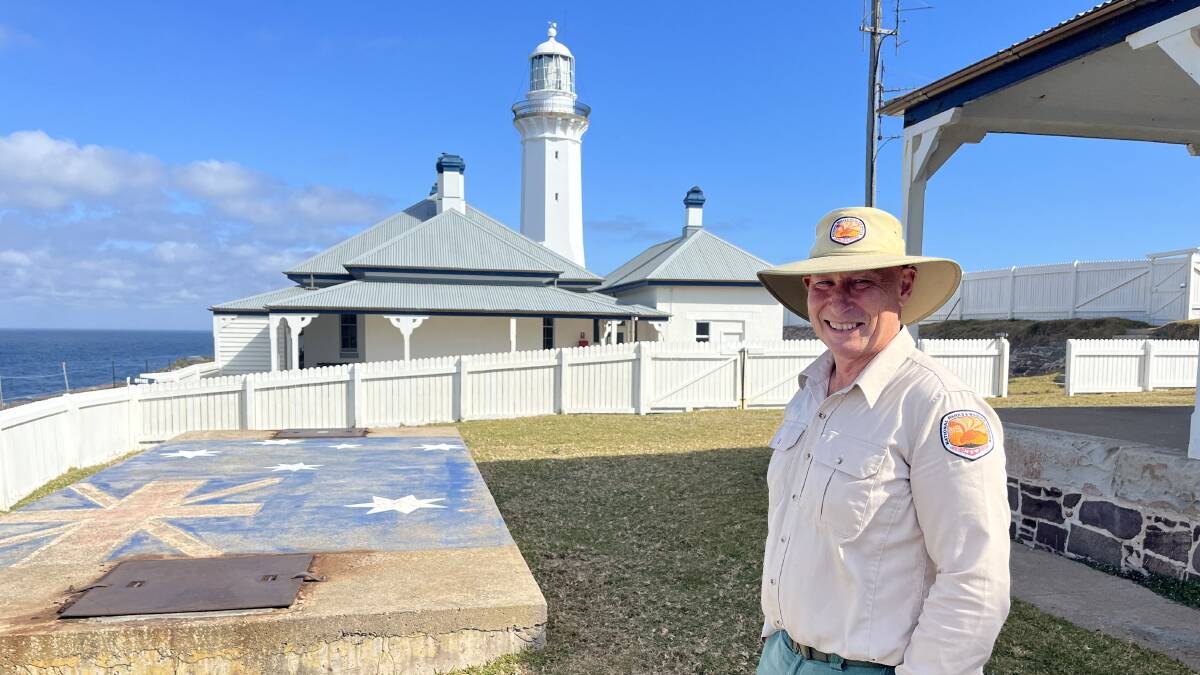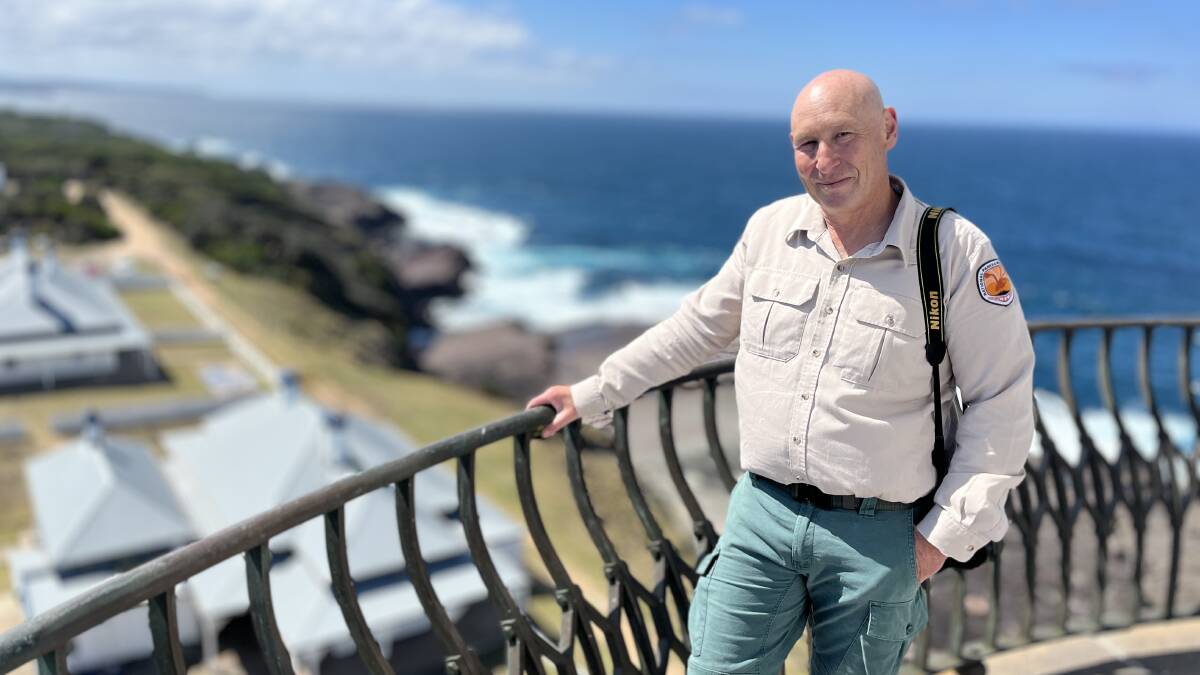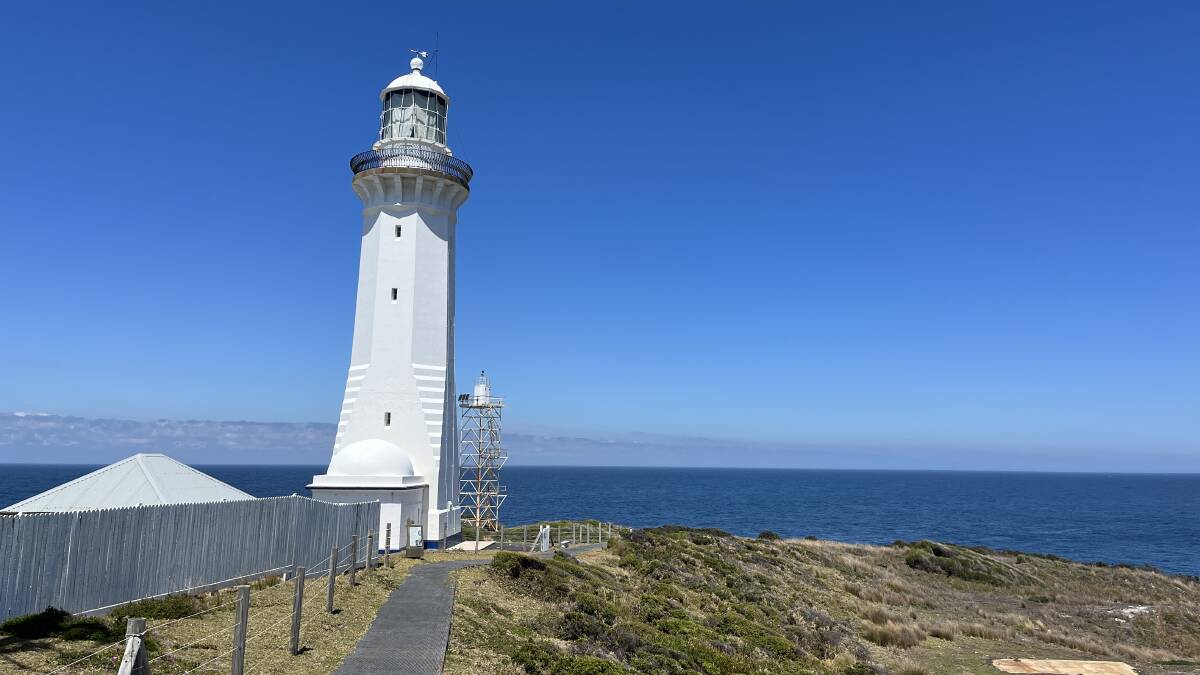
Perched proudly on the edge of a peninsula south of Twofold Bay, gazing out at sea yet no longer actively protecting sailors and vessels from reef and rock inflictions, Green Cape Lightstation may soon flicker alive once more, reestablishing its role to warn those on the sea.
Subscribe now for unlimited access.
or signup to continue reading
Designed by the NSW Colonial Architect James Barnet, built of form cast concrete, finely-axed Melbourne bluestone and with an elegant double-curved gunmetal railing twisting around its elevated walkway, NSW's southernmost lighthouse celebrated 140 years on November 1, 2023.
It was deactivated in 1994 and replaced by an automated steel lattice skeleton tower with a solar powered light that sits in front of the original structure.
However, NSW National Parks and Wildlife lightstation caretaker Greg Leayr said he hoped to see it reinstated before he retired.
"It would be very exciting, particularly it would be good for the region because it would be a tourist attraction [having] a working lighthouse again, there are a lot of people who are very enthusiastic about lighthouses," Greg said.
"This one is a very special lighthouse, it was made out of form cast concrete, form cast on site, and it was the largest form cast concrete structure in all of Australia, first form cast lighthouse in Australia, and was also the tallest in Australia when it was built.
READ ALSO:
"Unlike modern concrete, it's got no rebar reinforcement material in it, so it'll never get concrete cancer, and it'll be around for a long long time."
More than 200,000 bricks were used in the project, which included the building of the three cottages, and telegraph station by well-known contractor and stonemason Albert W Aspinall, based on designs by James Barnet, who was responsible for another nine lighthouses, including Ballina Heads in 1866, Barrenjoey in 1881, and Montague Island in 1881.
Stone was quarried and blasted from the base of the northern cliff, and materials were then hauled by horses pulling iron buckets and wooden trolleys along a 7km wooden tramway from Bittangabee Bay to the Cape in Beowa National Park.

Spiraling up 29m and the 116 steps crafted by Newtown engineer Joseph Gommesen's textured cast-iron staircase re-painted in charcoal tones, the handrail a rich burgundy, and the fence and interior a crisp white, the Chance Brothers revolving lantern and Fresnel lens which effortless spins on a bed of mercury remained untouched alongside original brass features.
Originally fueled through kerosene and mantle, the light produced an output of 100,000 candelas for a radius of 34km, before it was electrified in 1962, and upgraded to 1,000,000 candelas in 1967 increasing the radius to 47km, then deactivated in 1994.
Working nine days on site and five days off, Greg said he "fell into the role" nine years ago, and enjoyed every day working in the unspoiled coastal paradise.

He has captured the aurora through a blanket of stars, witnessed rare sightings of a blue whale and the white Migaloo, and been startled awake by the sounds of spurting blowholes and enchantingly powerful whale songs.
"You can see a couple of hundred whales a day here [in whale season]. It's spectacular, we get them 20 metres off the rocks out in front," Greg said, before he continued with a smile.
"I have the best office in the world!"
Our journalists work hard to provide local, up-to-date news to the community. This is how you can access our trusted content:
- Bookmark www.begadistrictnews.com.au
- Make sure you are signed up for our breaking news and regular headlines newsletters
- Follow us on Twitter: @Bega_News
- Follow us on Instagram: @begadistrictnews


